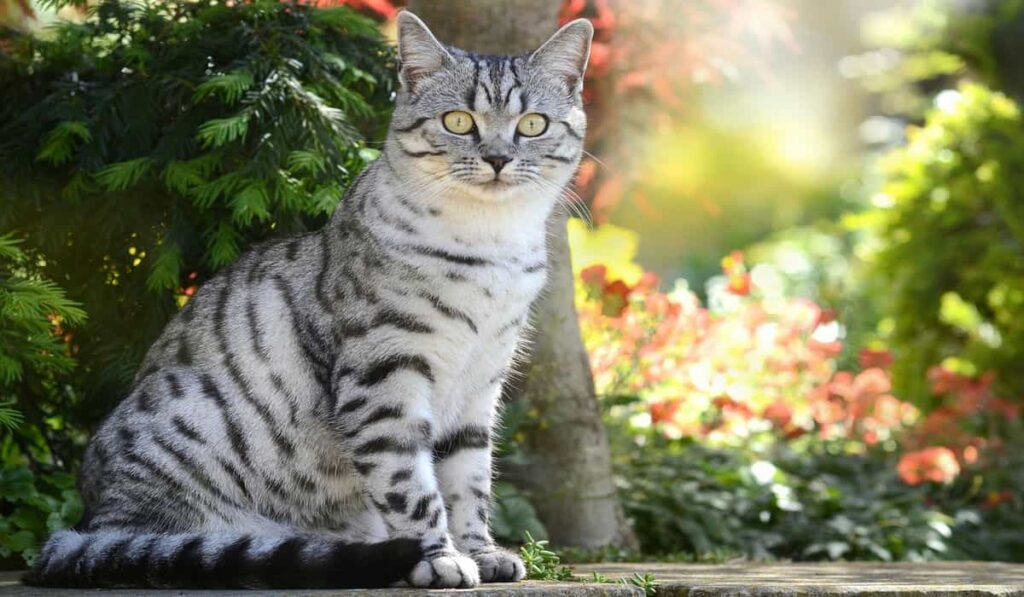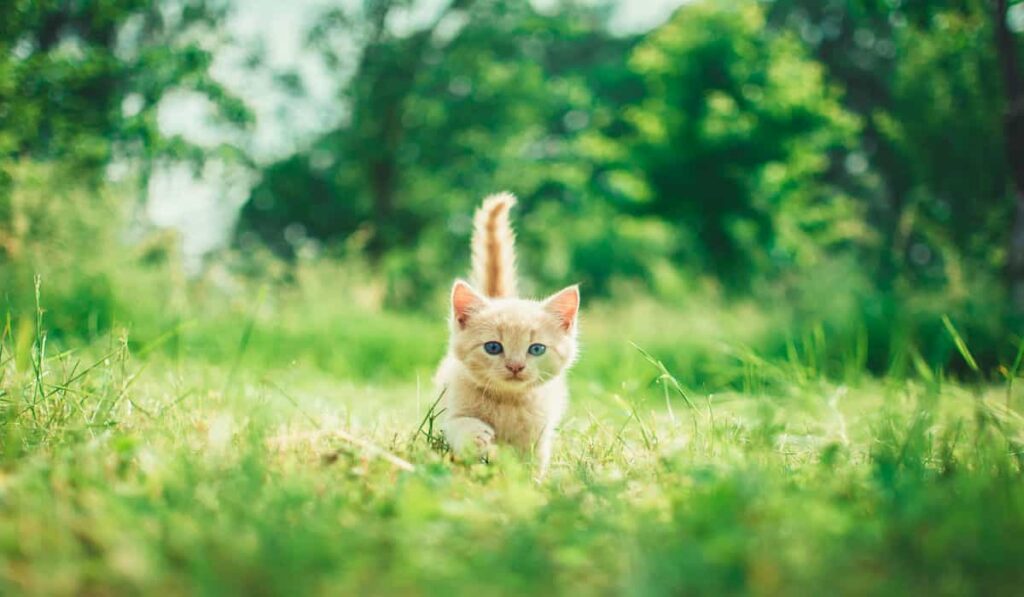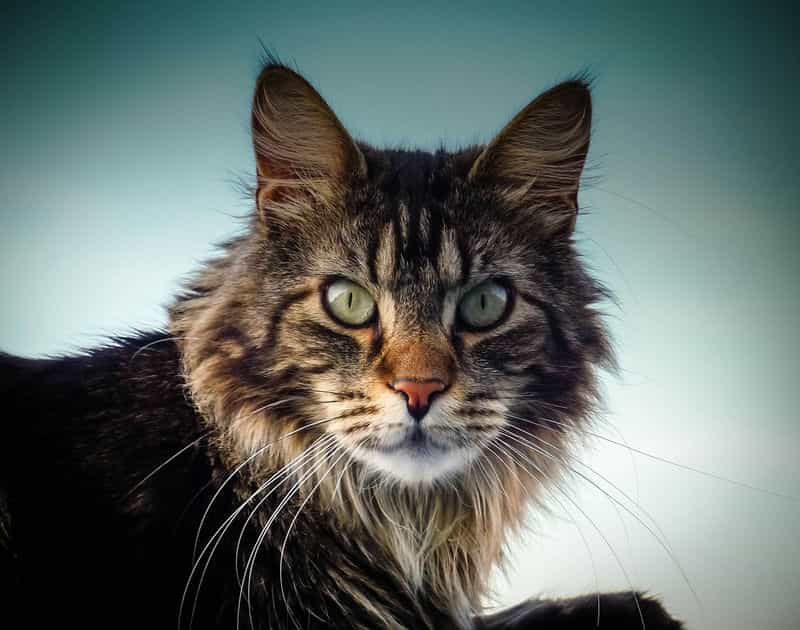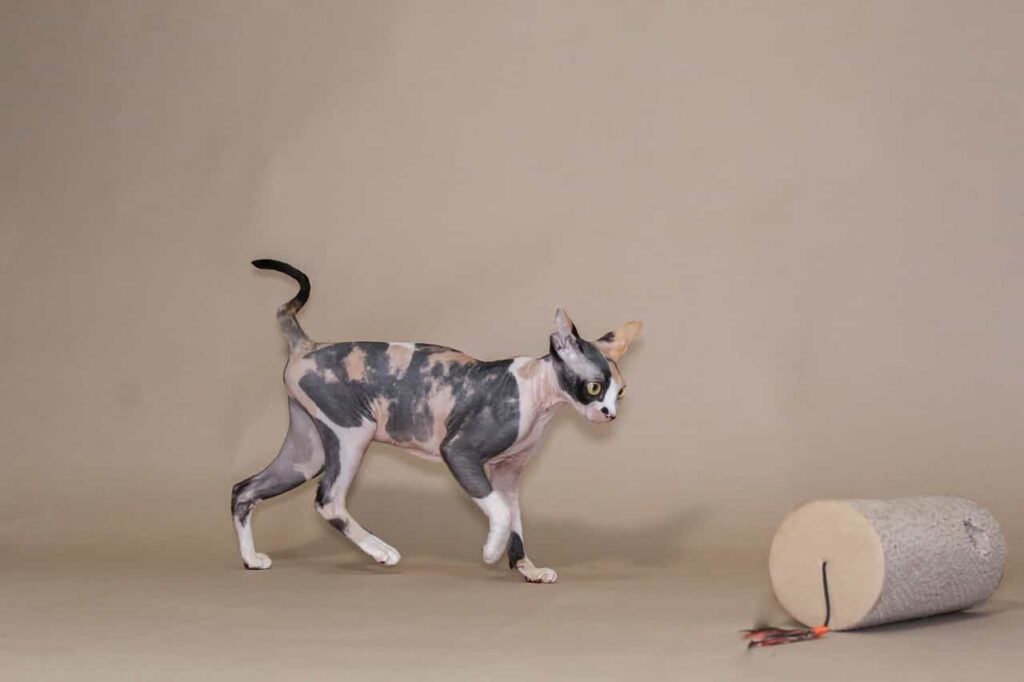Welcome to the intriguing world of the Bombay cat, a breed renowned for its stunning jet-black coat and captivating golden eyes. This guide offers a deep dive into the “physical characteristics and coat care of Bombay cats,” along with insightful details on “Bombay cat behavior” and “Bombay cat personality.”
Whether you’re considering “adopting a Bombay cat,” seeking tips on “training Bombay cats,” or looking for advice on “Bombay cat maintenance,” you’re in the right place. Join us as we explore the unique qualities of these majestic felines, from their distinctive appearance to their affectionate nature, and learn everything you need to know about “caring for Bombay kittens” and ensuring their health and happiness throughout their “Bombay cat lifespan.”
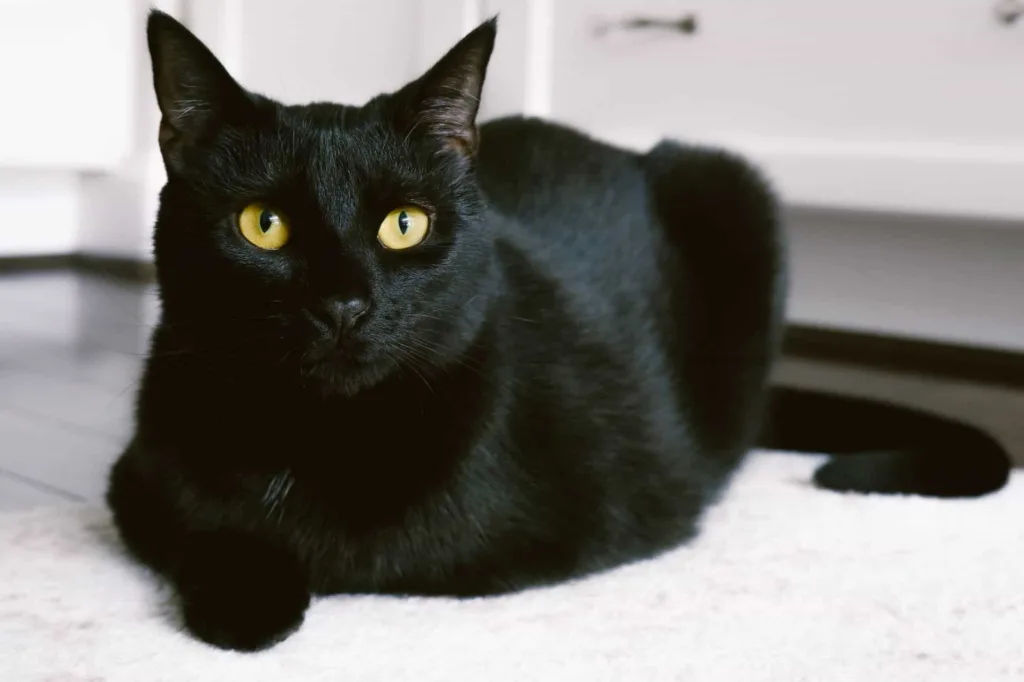

Table of contents
Breed specialty of Bomby cat
Other names:
Top cat, Miniature Panther, Parlor Panther
Weight:
Males- up to 15 Pounds, Females- up to 13 Pounds
Length:
Up to 20 inches
Coat colors:
Black with a Bluish glow
Coat length:
Always short-coated
Coat patterns:
Solid
Eye colors:
Gold or copper
Intelligence: High
Playfulness:
High
Energy level:
High
Affection level:
high
Friendliness:
high
Kids and other pet-friendliness:
High
Shedding level-
low
Maintenance needs:
low
Vocalizing tendency:
medium
Life expectancy:
up to 20 years
Hypoallergenic:
No
Origin: USA
Origin of the Bombay cat breed
Well, the origin is not critical of the Bombay cats. The breed is only the result of the desire of a breeder. There was a female breeder in Louisville, Kentucky, USA, Named Nikky Horner. She desired a cat breed that looked like a miniature Panther.
She wanted the appearance and structure of the breed to be like a Burmese but with a deep, glossy, patent leather Black. So, the breeding program began using a Burmese and a Black American Shorthair with bright and copper eyes.
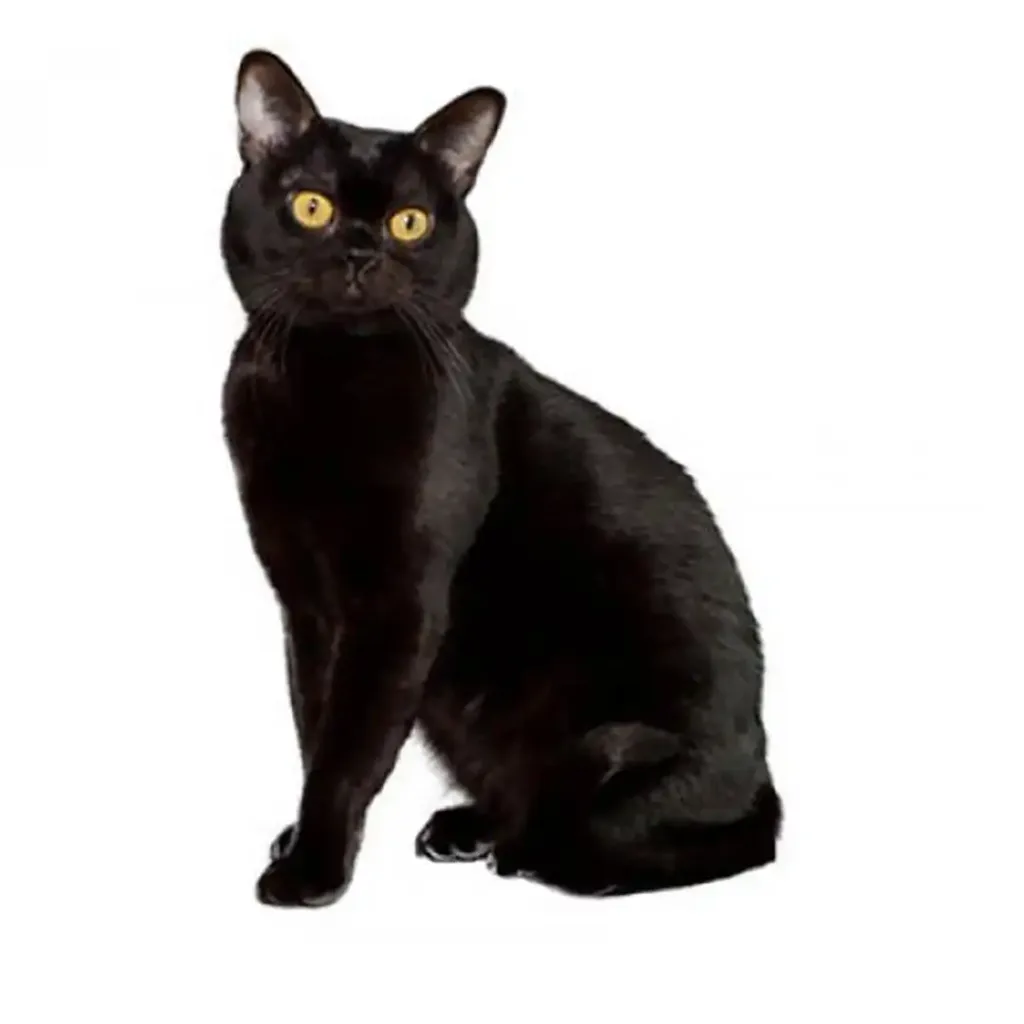

Nikki was inspired by the famous Indian Comic character ‘Bagheera’ from ‘The Jungle Book’. Bagheera is a Black Panther. So, Nikki named the breed Bombay cat as the inspiration from Indian Black Panther.
The initiative for Bombay cats was taken in the late 1950s. The first attempt failed but the second attempt was successful in 1965. The Bombay cat breed was created.
The breed inherited many traits from its mother and father. Its body resembles a Burmese cat but is a bit longer and less compact. The breed is sociable and curious like Burmese cats. They also inherit the American Shorthair cat’s ‘Go with the flow’ and laid-back personality.
The Bombay cat got Championship status in 1976 from The Cat Fancier’s Association (CFA) and breed recognition in 1979 by The International Cat Association (TICA). Nowadays the breeding of Bombay cats is outcrossed. The other cats is been using in the breeding programs of Bombay cats.
The appearance of Bombay cat
As you already know that Bombay cats are just like the miniature Black Panthers so they hold sleek, long, mascular, and slim bodies. They have a stocky, medium-sized, and rounded heads.
Its ears are medium-sized ears situated at the corners of the head and its eyes are large, floating, round and alert with rich Gold and copper color.
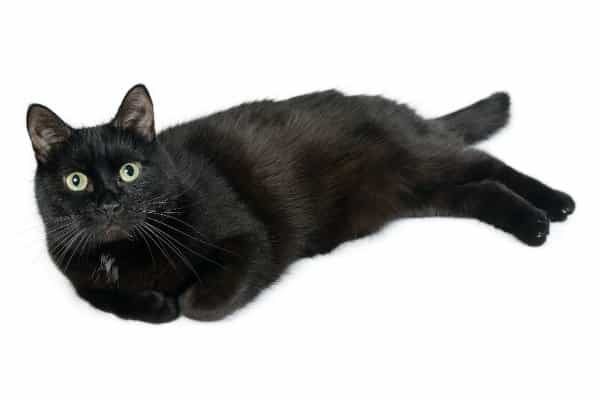

The coat color is short and Black-colored with a Bluish glow, not fully Black. The coats look great in the Sunlight.
If you touch their coat it will seem to you just like the Satin clothes. So glossy, so unique short-coats the breed belongs. Their average length is up to 20 inches and their weight is up to 15 pounds for male cats and females are up to 13 pounds.
Temperament and nature of the breed- Bombay cat
The Bombay cat breed is very much affectionate, friendly, sociable, intelligent, playful, active, and able to adjust to any type of house condition. They are happy with both apartments and big houses.
They’re not good with those people who don’t have enough time for them. They love to stay around their human families. They’re velcro kitties. They can adjust easily to children and other pets. But they have a bossy nature with other pets and they want to be the Top cat.
They will greet you and the guests at the doorstep. The breed also likes to talk to you but in a sweet voice. As their ancestor is a Burmese so their vocalizing is medium.
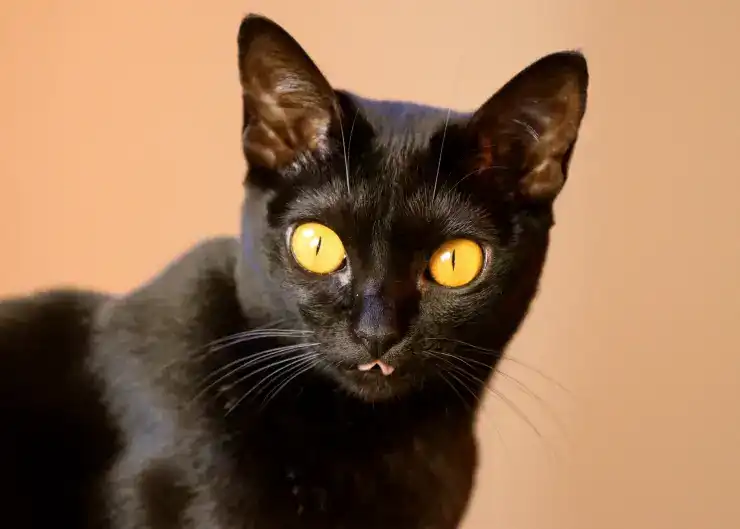

The Bombay cats are tricky and like to learn tricks from the family. They’re so smart and like to walk on a leash. You can take them with you can have a walk.
They also like to observe from the window and even outing. They like to see the outside view. And, they also have a hunting tendency as their ancestor is an American Shorthair cat.
Caring, grooming, and exercise for Bombay cat
Brush their coats once a week:
Bombay cats are low-grooming. Just a one-time brush in a week is enough to remove dead hair and dandruff. You can give them an occasional bath if they do any messy things or their coats get dirty.
Wipe Bombay cat’s eyes regularly:
Bombay cats are more prone to tearing than any other cats. Tears are irritating. So, wipe the corners of the eyes with soft cotton once daily.
Clean Bombay cat’s ears:
Clean their ears like other cats to remove dirt and to save them from infections. Take a cotton ball or wiper and clean the inner side of the ears.
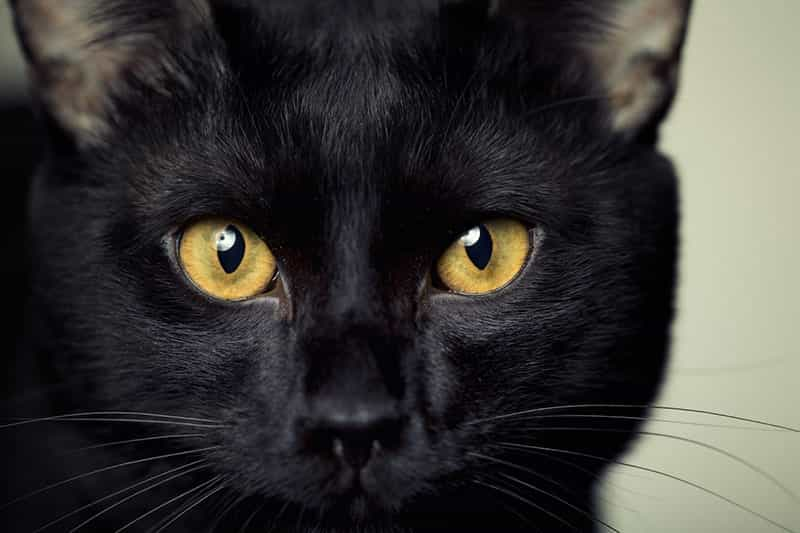

Trim their nails:
To save your childrens from the scratching of the cat’s nails. It is toxic. So, trim your Bombay cat’s nails regularly. Notice the blood vessels and vain around the nails while trimming. They shouldn’t be trimmed.
More caring tips for Bombay cat
Brush your Bombay cat’s teeth:
Clean teeth are essentials for a cat’s health. So, brush their teeth regularly. Before start brushing, lift up your cat daily and rub their gums with your fingers. When they are used to it, they start brushing with a special cat’s toothbrush. If your cat can tolerate the taste of toothpaste then use special cat toothpaste. Brushing will also bad breath from your cat’s mouth.
Check the breathing:
Bombay cats are prone to Brachycephalic Airway Syndrome. That means their breathing is problematic. If your cat passes out then it could be a cardiac issue. So take your cat to the vet immediately.
Provide plenty of interactive and engaging toys:
Bombays are a smart breed. So, they need more entertainment and mental stimulation. Provide them with puzzles and other engaging toys. Paper bags, cardboard boxes, scratching posts, and tall cat trees are also enough for them.
Play with your Bombay cat:
Spare some time to play with your kitty daily as they are very affectionate to their families. Also, engage them in playing fetch.
Give them warm places to snuggle up:
The Bombay cat breeds like warm spaces. So, their bed must be friendly, and a Sunny window is also good to make your cat happy. Make sure that your cat can watch the outside view.
Try leash training:
Bombay cats are very smart and engaged. So, try to make bonding with them with a leash. You take them along with you with a leash. The training should be conducted during their kittenhood.
Never punish your cat:
Use a harness to control them but make sure that the harness can’t hurt your cat. It will be a punishment if your cat gets injured. Take your cat for a walk. If you live in a quiet and less-populated area then you can leave your cat for an outing alone daily. It’ll be good for their mental health.
Heath and problems of Bombay cat
Like every breed Bombay cat breed is also prone to some health issues. Those are-
- Hypertrophic Cardio Myopathy (HCM):
the heart muscles thicken and obstruct producing and providing blood in the whole body- this condition is called HCM.
- Excessive tearing of the eyes:
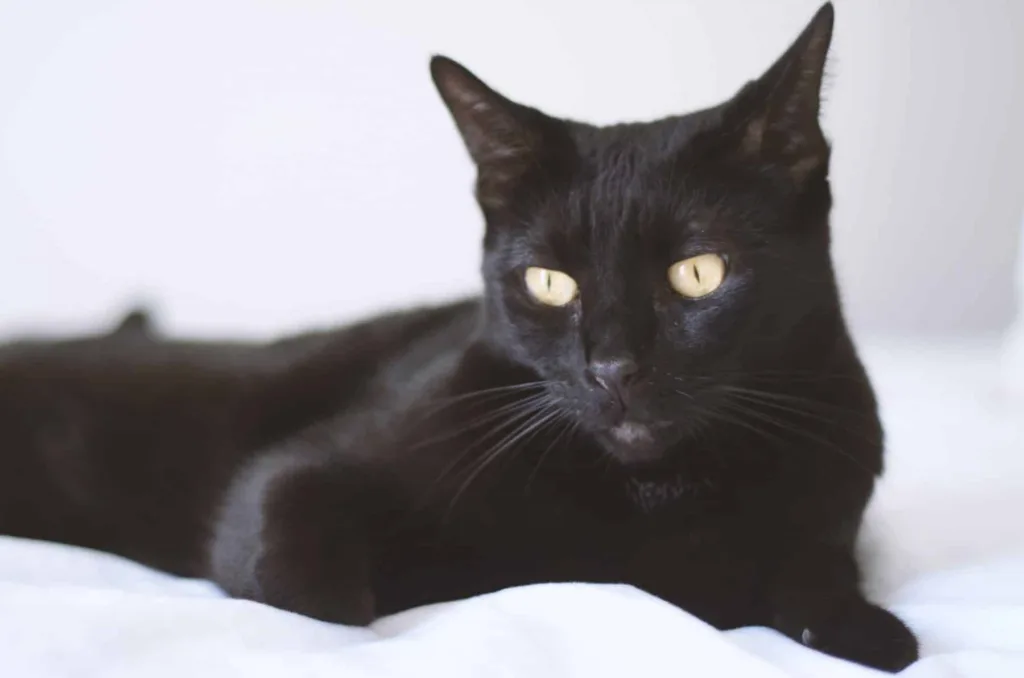

This problem has come from Burmese cats. It is a disturbing trait of Bombay cats.
- Brachycephalic Airway Syndrome:
Your cat faces difficulties breathing. It is because of their short muzzles.
- Obesity:
Bombay cats quickly put on weight. So, you can avoid the problem very easily. Just feed them with proper measurement of food and don’t leave the food free all day long.
Food and nutrition tips for Bombay cat
Well, Bombay cats don’t have any special requirements for food and nutrition. A high-quality feline diet with a mixture of wet and dry food and plenty of fresh water is the best feeding for them. Just take off their measurement. As you know that your Bombay is prone to get obese.
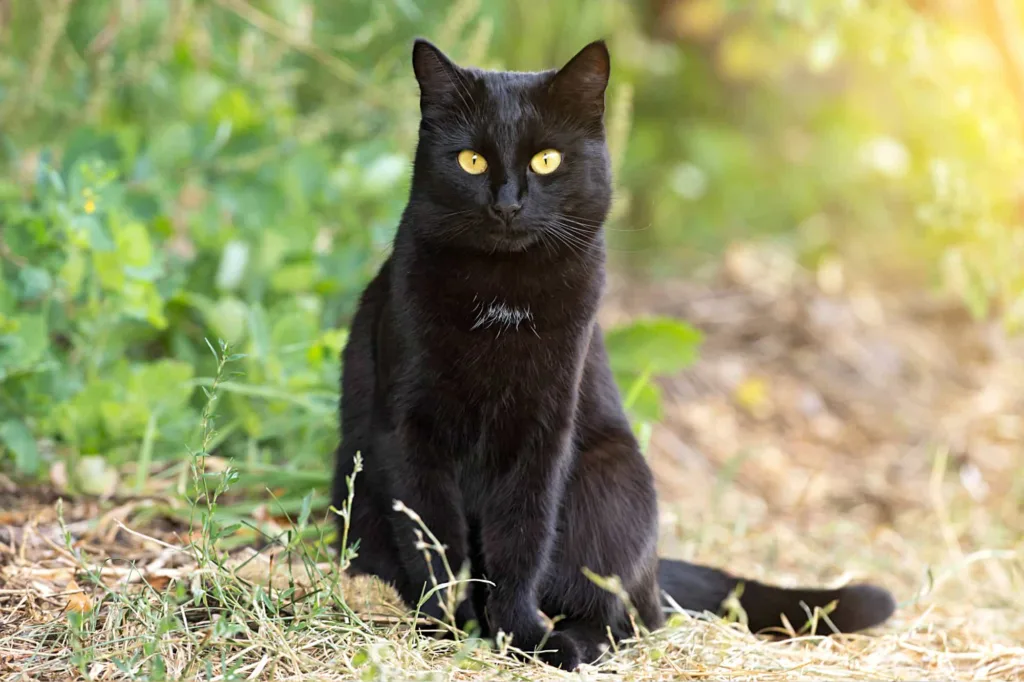

So, give them 2 times meals with an idle measurement and 4 times for the kittens. Obesity invites Diabetes, arthritis, and heart disease also. So, be careful about that.
The possibilities of being a long-haired Bombay cat
As the ancestors of Bombay cats were both Short-haired so Bombay cats are all short-haired. There is no long-haired Bombay cat is seen to date. But, if there is a genetic mutation occurs like in Siamese cats then the Long-haired Bombay cats will also be seen.
The Siamese is a short-haired breed but there was a genetic mutation occurred and Balinese cats took birth. Balinese are the long-haired version of Siamese cats.
Female Bombay cat
Bombay cats come in both males and females. They’re excellent kitties for both genders. The differences come in weight and vocalizing. Female Bombay cats are up to 13 Pounds in weight while males are up to 15 pounds. Female cats are a bit more talkative than male Bombay cats. Otherwise, both genders are adorable and easy to take care of and handle.
Breed overview of Bombay cat
A very exceptional looking Bombay cat came from the desire for a cat breed that has the look of a Black Panther with a Jet-Black coat with a Burmese cat type sociability and friendliness. Though the breed doesn’t have any connection with India its breeder gave it the name ‘Bombay cat.’ Bombay is the commercial capital of India.
The breed is solid and Short-coated with Black-colored coats. They have Golden and copper-colored eyes. Their life span is about 20 years if taken care of well. Their length is about 20 inches and their weight is about 15 Pounds. The breed originated in the USA. very good pet cats are easy to take care of.
How to own a Bombay cat?
If you want to own a Bombay cat then you need to study and search on the internet. Then follow the steps:
- Choose a reputed and trusted breeder:
All breeders are not trustworthy. You have to recognize them. The reputed and trustworthy breeders never assure you that their pet has no health issues and is 100% fit and ok, they’ll never get mischievous to answer your questions, and they’ll provide you a certificate of the authority as a breeder and the test results they have conducted on the pet you’re going to purchase.
Reputed breeders will be willing to keep contacts after the purchase is over and they have their own websites.
- Check the lists of the Cat Fanciers Association (CFA) and The International Cat Association (TICA). They maintain a list of reputed breeders. But one thing you need to remember is that Bombay cat breeders and Burmese cat breeders are often the same. So, don’t get confused. Choose the right kitty you have gone for.
- You also can go to the cat shows nearby. The breeders love to exhibit and tell about the cats and also sell them. So, you can buy from there.
Adopt from a shelter home:
Though the breed is rare but you can check it out in shelters. If you’re lucky enough then you might get your desirable Bombay cat. Otherwise, you can get another Black cat if you want.
Physical Characteristics and Coat Care of Bombay Cats
Bombay cats, often referred to as mini panthers, boast a striking appearance characterized by a sleek, glossy black coat and mesmerizing copper or green eyes. This “black cat breed” has a muscular yet elegant build, with a distinctive sheen on their fur that requires regular “Bombay cat grooming” to maintain. “Bombay cat coat care” is relatively straightforward, involving routine brushing to remove loose hair and distribute natural skin oils.
Their coat is one of their most notable features, setting them apart from other breeds. The importance of “Bombay cat grooming” extends beyond aesthetics; it’s also a bonding experience and an opportunity to check for any “common diseases in Bombay cats.” Proper grooming helps in identifying issues like skin allergies, which are relatively rare in this breed. “Caring for Bombay kittens” includes instilling good grooming habits early on, ensuring they grow accustomed to regular care routines.
Understanding the Behavior and Personality of Bombay Cats
The “Bombay cat personality” is as captivating as their appearance. Known for their affectionate and sociable nature, these cats often display dog-like traits, such as following their owners around and seeking constant companionship. Understanding “Bombay cat behavior” is crucial for anyone considering “adopting a Bombay cat.” These felines thrive on interaction and do not like being left alone for long periods, making them ideal pets for families or individuals who can provide them with ample attention.
Bombay cats are intelligent and inquisitive, often showing interest in everything their owners do. Their playful nature lasts well into adulthood, requiring engagement through interactive play and mental stimulation. “Training Bombay cats” can be an enjoyable process due to their eagerness to learn and please their owners. This sociable breed integrates well into households, making them a perfect “Bombay cat as a family pet.” However, understanding and catering to their need for interaction is essential in preventing potential “Bombay cat behavior problems.”
Bombay Cat Training Tips
Training a Bombay cat can be a rewarding and enjoyable experience due to their intelligent and responsive nature. “Training Bombay cats” involves harnessing their curiosity and eagerness to engage. Start with basic commands and tricks, using positive reinforcement techniques such as treats and praise. These cats are known for their ability to learn quickly, making training sessions both fun and productive.
One of the key aspects of “Bombay cat behavior” is their desire for interaction, which can be utilized in training. Engage them in activities that stimulate their minds, such as puzzle toys or agility exercises. “Caring for Bombay kittens” includes socialization and early training to ensure they grow into well-adjusted adults. Remember, consistent training helps in developing a strong bond between you and your cat, while also addressing any “Bombay cat behavior problems.”
Regular grooming should also be part of the training routine. Getting your Bombay cat accustomed to “Bombay cat grooming” from a young age will make it a much easier and more enjoyable process for both of you. It’s important to maintain patience and consistency in training, as this will lead to the best outcomes for both you and your Bombay cat.
Bombay Cat Socialization Guide
Socialization is crucial in shaping the personality and behavior of a Bombay cat. A well-socialized Bombay cat is typically more confident, outgoing, and less prone to anxiety or fear-based behaviors. The process of socialization involves exposing your cat to a variety of experiences, environments, and people at a young age. This helps them become accustomed to different situations, reducing the likelihood of “Bombay cat behavior problems” later in life.
Introducing your Bombay cat to different people, including children and other pets, should be done gradually and in a controlled environment. Positive experiences during these interactions are essential for fostering their natural sociable nature. “Training Bombay cats” in social skills also includes teaching them how to interact and play gently, which is especially important for “Bombay cats as a family pet.”
Regular play and interaction are key components of “Bombay cat maintenance.” Ensure they have enough mental and physical stimulation to keep them engaged and happy. Remember, a well-socialized Bombay cat is more likely to be well-adjusted, making them a delightful companion.
Bombay Cat Maintenance and Safety Tips
Proper maintenance of a Bombay cat involves a balance of good grooming, diet, and environmental management. “Bombay cat maintenance” starts with regular “Bombay cat grooming” to keep their luxurious black coat shiny and healthy. This includes routine brushing and, if necessary, occasional bathing.
Diet is another important aspect of their maintenance. “Bombay cat diet” should be rich in high-quality protein and balanced with necessary nutrients to maintain their health. Be mindful of their portion sizes to prevent obesity, a common issue among indoor cats like Birmans. Regular veterinary check-ups are crucial to monitor any “common diseases in Bombay cats” and address “Bombay cat health issues” promptly.
Safety is paramount, especially for indoor cats. Ensure your home is free from hazards that could pose a risk to your cat. Providing a safe, stimulating environment with plenty of toys and scratching posts can help keep them active and entertained. “Caring for Bombay kittens” includes setting up a safe space where they can play and rest without risks.
Conclusion
In summary, the Bombay cat is a breed that combines stunning beauty with a charming personality. Known for their sleek black coat and affectionate nature, they make excellent companions for families and individuals alike. By understanding their needs and behaviors, from “Bombay cat grooming” to “Bombay cat diet,” owners can ensure these cats lead a healthy and fulfilling life. Whether you’re a long-time owner or considering “Bombay cat adoption,” caring for a Bombay cat is a rewarding experience that brings joy and companionship. Embrace the unique qualities of the Bombay cat, and enjoy the enriching journey of living with one of these magnificent felines.

